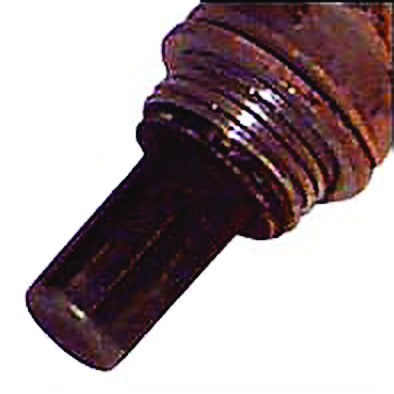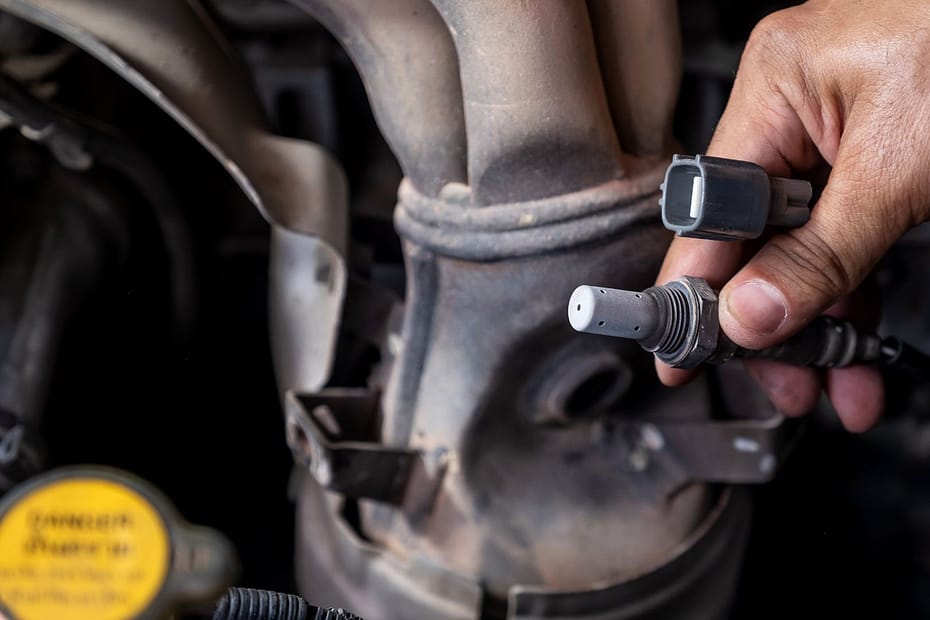A bad O2 sensor can cause poor fuel economy and emissions issues. It is important to address this problem promptly to ensure proper functioning of the vehicle.
Signs Of A Bad O2 Sensor
A bad O2 sensor can cause poor fuel economy, rough idling, and increased emissions. It may also lead to engine misfires and difficulty starting the vehicle. Regular monitoring and timely replacement of the O2 sensor can prevent these issues and ensure optimal vehicle performance.
Engine Misfires
One of the signs that indicate a bad oxygen (O2) sensor is engine misfires. Engine misfires occur when the sensor fails to accurately measure the exhaust gases and sends incorrect signals to the engine control unit (ECU). This can result in an imbalance in the fuel-to-air ratio, causing the engine to misfire or stutter during acceleration or while idling.
Oxygen sensors are responsible for monitoring the oxygen levels in the exhaust gases and providing feedback to the ECU, which then adjusts the fuel injector pulse width accordingly. When the O2 sensor is faulty, it may not be able to detect the oxygen levels accurately, leading to an incorrect fuel mixture. This can cause the engine to misfire, affecting its performance and fuel efficiency.
Rough Idling
Another common sign of a bad O2 sensor is rough idling. The O2 sensor plays a crucial role in maintaining the air-fuel mixture for optimal combustion. When the sensor becomes malfunctioning, it fails to provide accurate readings to the ECU, leading to an improper fuel mixture.
This can result in a rough idling engine, characterized by vibrations, fluctuations in RPM, and audible changes in the engine sound. The irregular air-fuel mixture can also cause the engine to stall or hesitate while idling. If you notice these symptoms, it’s essential to have your O2 sensor checked and replaced if necessary to restore smooth idling and improve overall engine performance.

Credit: www.cars.com
Effects On Fuel Efficiency
An O2 sensor, also known as an oxygen sensor, plays a crucial role in the proper functioning of your vehicle. When this sensor becomes faulty, it can have several negative effects on your car’s fuel efficiency. In this section, we will discuss two main effects: Increased Fuel Consumption and Inaccurate Air-Fuel Ratio.
Increased Fuel Consumption
A bad O2 sensor can lead to increased fuel consumption, causing your vehicle to burn more fuel than necessary. The sensor is responsible for detecting the amount of oxygen in the exhaust gases and relaying this information to the engine control unit (ECU). Based on the feedback received from the O2 sensor, the ECU adjusts the air-fuel mixture to maintain an optimal ratio for efficient combustion.
However, when the O2 sensor malfunctions, it fails to provide accurate readings to the ECU. This can result in the engine running rich (excess fuel) or lean (insufficient fuel), leading to inefficient combustion. In turn, this inefficiency requires the engine to burn more fuel to compensate for the imbalance, ultimately reducing your vehicle’s fuel efficiency.
Inaccurate Air-fuel Ratio
The O2 sensor plays a critical role in maintaining the correct air-fuel ratio in your engine, ensuring efficient combustion. When the sensor fails, it can provide incorrect readings to the ECU, leading to an inaccurate air-fuel mixture. This imbalance can result in various issues:
- Decreased Power: An incorrect air-fuel ratio can reduce the overall power and performance of your vehicle.
- Poor Acceleration: Inaccurate air-fuel mixture can cause sluggish acceleration, making it harder for your vehicle to gain speed.
- Engine Misfires: The incorrect ratio can cause the engine to misfire, leading to reduced fuel efficiency and potential damage to the engine components.
- Emission Problems: A faulty O2 sensor can also contribute to increased emissions, polluting the environment and possibly causing your vehicle to fail emission tests.
Overall, a malfunctioning O2 sensor can have a significant impact on your vehicle’s fuel efficiency. If you notice any signs of a bad O2 sensor, such as reduced mileage or engine performance, it is crucial to have it diagnosed and replaced by a professional as soon as possible to restore your vehicle’s optimal fuel efficiency.
Impact On Emissions
A malfunctioning O2 sensor can lead to increased emissions, affecting the environment and the vehicle’s performance. Consequently, it is crucial to promptly address and replace a bad O2 sensor to minimize the impact on emissions and maintain optimal fuel efficiency.
Impact on Emissions A bad O2 sensor can have a significant impact on the emissions produced by a vehicle, leading to a range of issues that can affect both the environment and the vehicle’s performance. The emission of harmful gases is a critical concern when it comes to vehicle maintenance, as it can not only impact the environment but also lead to regulatory and safety issues. Here’s a closer look at the specific effects a bad O2 sensor can have on emissions.
Increased Harmful EmissionsA malfunctioning O2 sensor can cause an increase in harmful emissions such as carbon monoxide and hydrocarbons from the vehicle’s exhaust.
|
Failure To Meet Emissions StandardsWhen an O2 sensor fails, the vehicle may no longer meet emissions standards set by regulatory authorities.
|

Credit: m.youtube.com
Engine Performance Issues
One of the common issues that can arise due to a bad O2 sensor is related to engine performance.
Loss Of Power
When the O2 sensor malfunctions, the engine may experience a significant decrease in power output.
Difficulty Starting
A faulty O2 sensor can also lead to problems with engine starting, making it hard to get the vehicle running.
Long-term Damage
Long-Term Damage: Over time, a bad oxygen sensor can lead to serious issues that can result in costly repairs and decreased engine performance.
Damge To Catalytic Converter
If a bad O2 sensor goes untreated, it can cause damage to the catalytic converter, reducing its efficiency in reducing emissions.
Potential Engine Damage
Continued presence of a faulty O2 sensor can lead to engine problems like reduced fuel efficiency and overall performance.

Credit: www.walkerproducts.com
Frequently Asked Questions Of What Can A Bad O2 Sensor Do
What Are The Symptoms Of Bad Oxygen Sensor?
A bad oxygen sensor can cause rough idling, poor fuel efficiency, and increased emissions. Other symptoms include engine misfires, loss of power, and a check engine light. It’s important to replace a faulty sensor to prevent further damage to the engine.
What Happens If You Keep Driving With A Bad O2 Sensor?
Continuing to drive with a bad O2 sensor may reduce fuel efficiency and cause engine damage. It can also lead to higher emissions and potential catalytic converter failure. Promptly fixing the O2 sensor is essential for optimal vehicle performance and environmental impact.
What Happens If I Unplug My O2 Sensor?
Unplugging your O2 sensor can lead to poor fuel efficiency, decreased engine performance, and potential damage.
Is An O2 Sensor A Major Issue?
An O2 sensor is a crucial component for monitoring and optimizing fuel efficiency in vehicles. If malfunctioning, it can impact engine performance.
Conclusion
A bad O2 sensor can lead to decreased fuel efficiency and engine performance. It may also cause higher emissions and potential damage to the catalytic converter. Regular maintenance and prompt sensor replacement can prevent these issues. Understanding the symptoms and addressing them swiftly will keep your vehicle running smoothly.
